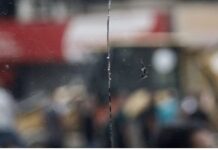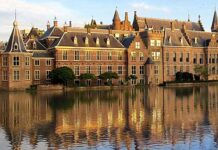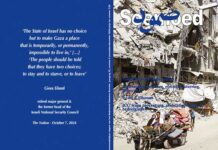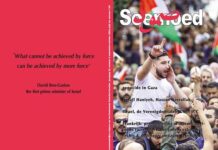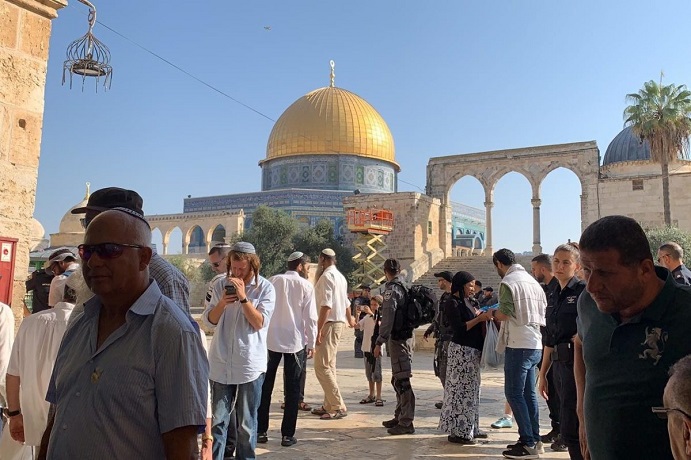Middle East Monitor / January 6, 2020
Israeli settlers stormed Al-Aqsa Mosque 23 times in December and banned the Muslim call to prayer from the Ibrahimi Mosque in Hebron 49 times, the Ministry of Religious Endowments said in its monthly report.
The report prepared by the Ministry’s Public Relations and Information Department stated that the occupation and its settlers intensified their incursions into the Al-Aqsa Mosque during the Hanukkah. Extremist voices were raised to organise collective incursions in large numbers through the so-called “Solomon’s Temple groups”, announcing a program of action and activities focused on the permissibility to undermine Al-Aqsa Mosque and the Old City in occupied Jerusalem. The occupation police pushed more of its members and the select units to the heart of the Holy City to provide protection and guarding for settler gangs during their marches, provocative incursions and their riots in the city.
The report monitored that the extremist Glick stormed Al-Aqsa more than three times during December, and the so-called leader of the occupation police in Jerusalem stormed Al-Aqsa leading a riot group.
During December, there had been repeated assaults and incursions into the Gate of Mercy, preventing worshipers from getting closer to it, and arresting a number of them.
The occupation continued its Judaisation campaign against the city, especially near Al-Aqsa Mosque, through several projects, including the occupation government’s plans to establish Judaisation projects in the city of Jerusalem, specifically in Silwan, south of Al-Aqsa Mosque, to impose more control over the city, change the status quo, and continuing the excavation work below the mosque and in the Umayyad palaces area.
This is in addition to the inauguration of a Judaic railway project linking Tel Aviv and occupied Jerusalem, as well as the long-ago prepared project, namely the establishment of a cable car line in Jerusalem aimed at Judaising the horizon, running over the Arab neighbourhoods in Jerusalem and next to Al-Aqsa Mosque, connecting the Mount of Olives with Wailing Wall, passing over several points in the Old City of occupied Jerusalem and around its historical walls. It is expected to be opened in 2021. Moreover, Israeli settlement associations have established a three-storey biblical museum with an area of 1,390 square meters in Ein Al-Fawqa area in Silwan, which is only dozens of meters away from Al-Aqsa Mosque from the southwest side.
The Ministry of Endowments’ Undersecretary, Hossam Abu Al-Rab, said that Israeli attempts to change the identity and character of the Old City of occupied Jerusalem, especially Al-Aqsa Mosque and its adjacent sites, will not succeed thanks to the legendary steadfastness of our people. He warned at the same time of the occupation’s policy in increasing the incursions, the pace of Judaisation, the intervention in Al-Aqsa Mosque’s affairs, the system of siege and the barriers around it.
The report revealed that the occupation prevented restoration works in the Dome of the Rock, arrested a guard, and practised the policy of banishment, as it used to do every month, against sextons, protesters, and worshipers.
A settler also stormed the Church of the Holy Sepulchre in occupied Jerusalem wielding a knife on Christmas Day. He was later arrested.
At Hebron’s Ibrahimi Mosque, the occupation prohibited the call to prayer (the athan) 49 times. A menorah was placed on the roof of the Muslim holy site to mark the start of the Jewish festival of Hanukkah.
A plan was developed to make additions to the Ibrahimi Mosque at the cost of half a million shekels ($0.14 million). This includes installation of an elevator for the disabled for the use of settlers.
In occupied Nablus, 2,500 settlers held prayers at Joseph’s Tomb. In Halhoul, about 250 settlers stormed the area of Beit Tzur to light Hanukkah candles.




